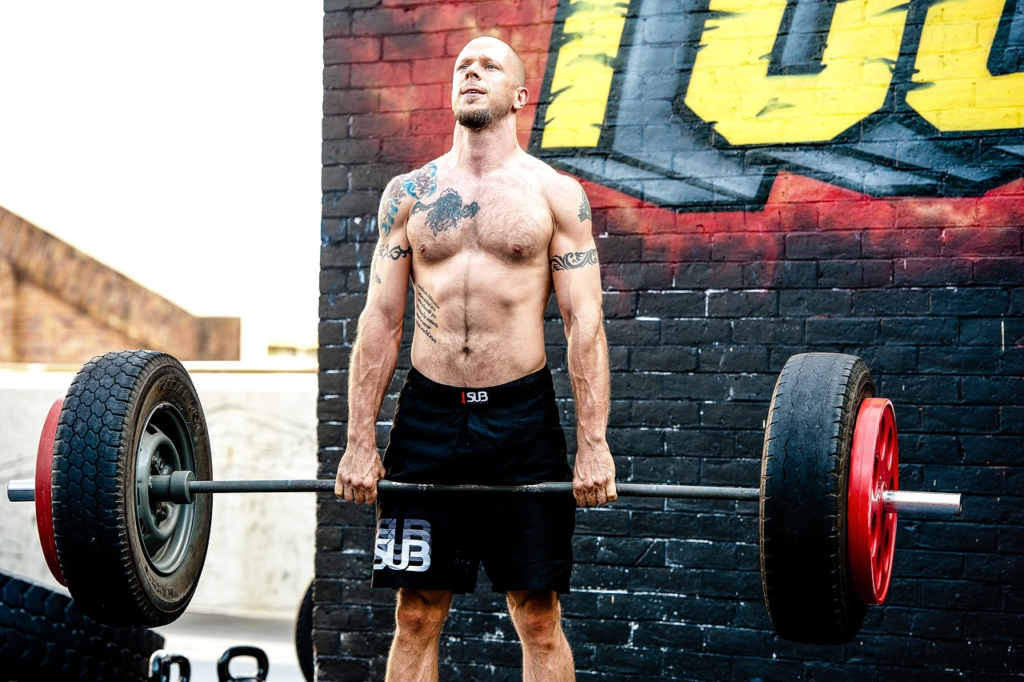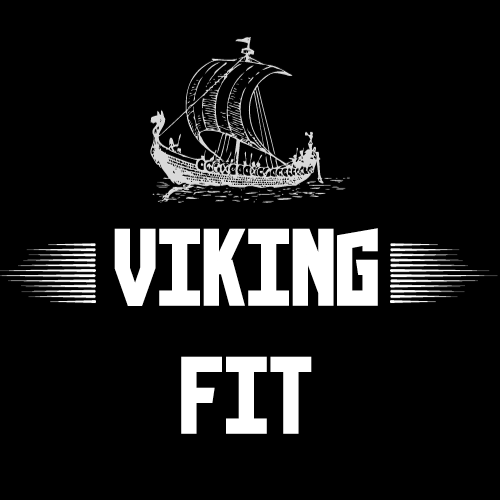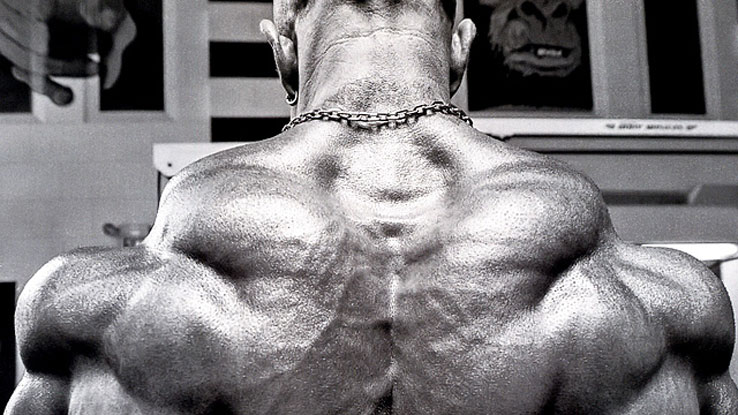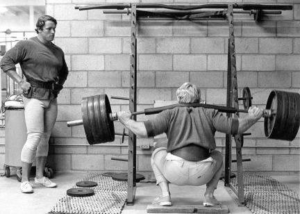.If you’re looking to build a stronger, more defined upper back, focusing on lower trap exercises is essential. The lower trapezius muscle plays a crucial role in shoulder stability and overall back strength. In this guide, we’ll explore the best exercises to target your lower traps, the benefits of incorporating these exercises into your routine, and tips for maximizing your workouts.
Table of Contents
What are the Lower Traps?
The trapezius muscle is a large, triangular muscle that extends across the back of your neck and shoulders. It is divided into three parts: upper, middle, and lower. The lower trapezius is located at the bottom of the trapezius muscle and is responsible for scapular depression and upward rotation. Strengthening this muscle can improve posture, reduce the risk of shoulder injuries, and enhance athletic performance.
Anatomy of the Trapezius Muscle
The trapezius muscle spans from the base of the skull to the lower thoracic vertebrae and extends laterally to the spine of the scapula and the clavicle. It has three distinct regions:
- Upper Trapezius: Involved in neck extension, scapular elevation, and upward rotation.
- Middle Trapezius: Facilitates scapular retraction.
- Lower Trapezius: Responsible for scapular depression and upward rotation.
Understanding the anatomy of the trapezius muscle is crucial for targeting each part effectively. While the upper traps often receive more attention, neglecting the lower traps can lead to muscular imbalances and poor posture.

Benefits of Lower Trap Exercises
- Improved Posture: Strengthening the lower traps helps counteract the forward shoulder roll caused by tight chest muscles and weak upper back muscles. This improvement in posture can alleviate neck and back pain associated with prolonged sitting and poor ergonomics.
- Enhanced Shoulder Stability: Strong lower traps support shoulder mechanics and reduce the likelihood of injuries. Athletes and fitness enthusiasts alike can benefit from the added stability during pressing and pulling movements.
- Balanced Upper Back Development: Targeting the lower traps ensures balanced muscle development, preventing muscle imbalances that can lead to pain and dysfunction. Balanced development also contributes to a more aesthetically pleasing physique.
- Better Athletic Performance: Athletes, especially those involved in overhead sports like baseball, tennis, and swimming, benefit from the increased stability and power that strong lower traps provide. Improved scapular control can enhance throwing mechanics and reduce the risk of shoulder impingements.
- Pain Reduction: Strengthening the lower traps can help alleviate chronic pain in the neck and upper back by correcting postural imbalances and reducing strain on the cervical spine.
Top 10 Lower Trap Exercises
1. Y Raise
How to Do It:
- Lie face down on an incline bench with light dumbbells in each hand.
- Raise your arms in a Y shape above your head, keeping your thumbs pointing up.
- Hold the top position for a second, then slowly lower your arms back to the starting position.
Benefits: This exercise isolates the lower traps and improves scapular stability. By lifting the arms in a Y shape, you specifically target the lower portion of the trapezius, which is often underdeveloped.
Pro Tip: Use light weights to maintain proper form and prevent engaging the upper traps.
Variations:
- Perform Y raises on a stability ball to engage the core.
- Use resistance bands instead of dumbbells for a different resistance curve.
2. Prone Trap Raise
How to Do It:
- Lie face down on an incline bench with your arms hanging down.
- Lift your arms straight out to the sides to shoulder level, thumbs up.
- Pause at the top, focusing on squeezing the lower traps, then return to the starting position.
Benefits: This exercise effectively targets the lower traps while minimizing the involvement of the upper traps. It’s a great movement for isolating the lower traps and improving scapular control.
Pro Tip: Ensure your thumbs point upwards to maximize lower trap engagement.
Variations:
- Perform prone trap raises on a flat bench to increase the range of motion.
- Use light dumbbells or no weights initially to perfect the form.
3. Face Pulls
How to Do It:
- Using a resistance band or cable machine, set the pulley at upper chest height.
- Pull the handles towards your face with elbows high and wide, squeezing the shoulder blades together.
- Hold the contraction for a moment before slowly releasing back to the starting position.
Benefits: Face pulls engage the lower traps along with the rear delts and rhomboids for improved upper back strength. This exercise also promotes healthy shoulder movement and stability.
Pro Tip: Focus on pulling with the muscles in your upper back rather than your arms to maximize effectiveness.
Variations:
- Perform face pulls seated on a bench to isolate the upper back further.
- Experiment with different grips (overhand, neutral) to target different parts of the traps.
4. Scapular Wall Slides
How to Do It:
- Stand with your back against a wall, arms at 90 degrees.
- Slide your arms up and down the wall while keeping contact, maintaining shoulder and elbow alignment.
- Focus on moving the scapulae smoothly.
Benefits: This exercise enhances scapular mobility and lower trap activation. It’s particularly useful for those looking to improve their shoulder mechanics and posture.
Pro Tip: Keep your lower back in contact with the wall to avoid arching.
Variations:
- Perform scapular wall slides lying on the floor for a more controlled movement.
- Use a resistance band around your wrists for added resistance.
5. Deadlift
How to Do It:
- With a barbell on the ground, hinge at your hips and bend your knees to grasp the bar.
- Lift the bar by extending your hips and knees simultaneously.
- Keep your back straight and engage your entire posterior chain.
Benefits: Although primarily a lower body exercise, deadlifts engage the entire posterior chain, including the lower traps. Deadlifts contribute to overall back strength and stability.
Pro Tip: Focus on engaging the lats and traps throughout the lift to maintain proper posture.
Variations:
- Try Romanian deadlifts to focus more on the hamstrings and lower back.
- Use a trap bar for a more ergonomic lifting position.

6. T Raises
How to Do It:
- Lie face down on an incline bench with your arms hanging down.
- Lift your arms out to the sides in a T position, keeping your thumbs pointing up.
- Squeeze your shoulder blades together at the top, then slowly lower back down.
Benefits: T raises target the lower traps and improve overall scapular stability. This exercise helps to counteract the dominance of the upper traps in many shoulder movements.
Pro Tip: Keep your movements slow and controlled to maximize muscle engagement.
Variations:
- Use resistance bands for T raises to provide constant tension.
- Perform T raises on a stability ball for added core engagement.
7. Superman Exercise
How to Do It:
- Lie face down on the floor with your arms extended in front of you.
- Simultaneously lift your arms, chest, and legs off the ground.
- Hold the top position for a few seconds before slowly lowering back down.
Benefits: The Superman exercise engages the entire posterior chain, including the lower traps. It’s an excellent bodyweight exercise for improving back strength and endurance.
Pro Tip: Focus on squeezing your glutes and lower traps at the top of the movement.
Variations:
- Alternate lifting opposite arm and leg for a more dynamic movement.
- Add ankle and wrist weights for increased resistance.
8. Reverse Flyes
How to Do It:
- Sit on the edge of a bench with dumbbells in each hand, leaning forward slightly.
- Lift the dumbbells out to the sides, keeping a slight bend in your elbows.
- Squeeze your shoulder blades together at the top, then slowly lower back down.
Benefits: Reverse flyes target the lower traps, rear delts, and rhomboids. This exercise helps to improve posture and upper back strength.
Pro Tip: Keep your back straight and avoid swinging the weights to maintain proper form.
Variations:
- Perform reverse flyes on an incline bench for a different angle.
- Use resistance bands for a constant tension variation.

9. Rowing Exercises
How to Do It:
- Sit on a rowing machine or use a resistance band anchored at chest height.
- Pull the handle towards your sternum, keeping your elbows close to your body.
- Squeeze your shoulder blades together at the end of the movement, then slowly release back.
Benefits: Rowing exercises engage the entire back, including the lower traps. They improve cardiovascular fitness and back strength simultaneously.
Pro Tip: Focus on the scapular retraction rather than just pulling with your arms.
Variations:
- Try different grips (underhand, overhand, neutral) to target different parts of the back.
- Incorporate single-arm rows for unilateral development.
10. Dumbbell Pullovers
How to Do It:
- Lie on a bench with a dumbbell held above your chest.
- Lower the dumbbell behind your head with a slight bend in your elbows.
- Lift the dumbbell back to the starting position, engaging your lats and traps.
Benefits: Dumbbell pullovers target the lower traps and the lats, improving upper body strength and flexibility.
Pro Tip: Keep your core engaged to prevent arching your back during the movement.
Variations:
- Perform pullovers on a stability ball for added core engagement.
- Use a resistance band for a different resistance curve.
Expert Opinions on Lower Trap Training
To provide a well-rounded perspective, let’s consider what experts in the field of fitness and physical therapy have to say about lower trap training.
Dr. John Rusin, a sports performance specialist, emphasizes the importance of lower trap exercises in preventing shoulder injuries. He recommends incorporating these exercises into every athlete’s training regimen to ensure balanced muscle development and optimal shoulder mechanics.
Bret Contreras, a renowned strength coach, highlights the role of lower traps in enhancing overall back aesthetics. He suggests that focusing on lower trap exercises can lead to a more balanced and visually appealing upper back, which is often neglected in traditional bodybuilding routines.
Eric Cressey, a physical therapist and strength coach, stresses the significance of lower trap activation for improving postural alignment. He advises clients to perform lower trap exercises regularly to counteract the effects of prolonged sitting and forward head posture.
Common Mistakes to Avoid
- Using Too Much Weight: The lower traps are relatively small muscles, so using heavy weights can lead to improper form and upper trap dominance. Start with light weights and focus on form.
- Poor Scapular Control: Many people fail to control their scapulae properly during lower trap exercises, reducing the effectiveness. Focus on slow and controlled movements.
- Neglecting Warm-Ups: Skipping warm-ups can increase the risk of injury. Always perform dynamic stretches and mobility drills before engaging in lower trap exercises.
- Ignoring Posture: Maintaining proper posture is crucial for effective lower trap engagement. Keep your spine neutral and avoid excessive arching or rounding.
- Overtraining: Overworking the lower traps can lead to muscle fatigue and imbalances. Ensure adequate rest and recovery between workouts.
Integrating Lower Trap Exercises into Your Routine
Sample Workout Plan for Beginners
Day 1: Upper Body Focus
- Warm-Up: Dynamic stretches and mobility drills (10 minutes)
- Y Raises: 3 sets of 12-15 reps
- Prone Trap Raises: 3 sets of 12-15 reps
- Face Pulls: 3 sets of 12-15 reps
- Scapular Wall Slides: 3 sets of 15 reps
- Cool Down: Static stretching (10 minutes)
Day 2: Full Body Workout
- Warm-Up: Dynamic stretches and mobility drills (10 minutes)
- Deadlifts: 4 sets of 8-10 reps
- Reverse Flyes: 3 sets of 12-15 reps
- Superman Exercise: 3 sets of 15 reps
- Dumbbell Pullovers: 3 sets of 10-12 reps
- Cool Down: Static stretching (10 minutes)
Day 3: Active Recovery
- Light cardio (e.g., walking, cycling) for 30 minutes
- Gentle stretching and foam rolling (20 minutes)
Sample Workout Plan for Advanced Lifters
Day 1: Push Day
- Warm-Up: Dynamic stretches and mobility drills (10 minutes)
- Bench Press: 4 sets of 6-8 reps
- Overhead Press: 4 sets of 6-8 reps
- Y Raises: 3 sets of 15 reps
- Prone Trap Raises: 3 sets of 15 reps
- Cool Down: Static stretching (10 minutes)
Day 2: Pull Day
- Warm-Up: Dynamic stretches and mobility drills (10 minutes)
- Deadlifts: 4 sets of 5-7 reps
- Bent Over Rows: 4 sets of 6-8 reps
- Face Pulls: 3 sets of 15 reps
- T Raises: 3 sets of 15 reps
- Cool Down: Static stretching (10 minutes)
Day 3: Leg Day
- Warm-Up: Dynamic stretches and mobility drills (10 minutes)
- Squats: 4 sets of 6-8 reps
- Lunges: 4 sets of 8-10 reps per leg
- Leg Press: 4 sets of 8-10 reps
- Romanian Deadlifts: 3 sets of 10-12 reps
- Cool Down: Static stretching (10 minutes)
Day 4: Active Recovery
- Light cardio (e.g., walking, cycling) for 30 minutes
- Gentle stretching and foam rolling (20 minutes)
Day 5: Upper Body Focus
- Warm-Up: Dynamic stretches and mobility drills (10 minutes)
- Pull-Ups: 4 sets of 6-8 reps
- Dumbbell Pullovers: 3 sets of 10-12 reps
- Reverse Flyes: 3 sets of 15 reps
- Superman Exercise: 3 sets of 20 reps
- Cool Down: Static stretching (10 minutes)
FAQs About Lower Trap Exercises
Q1: How often should I train my lower traps? A1: Aim to incorporate lower trap exercises 2-3 times per week, depending on your overall training volume and recovery. Ensure you allow adequate rest between sessions to prevent overtraining.
Q2: Can I do lower trap exercises at home? A2: Yes, many lower trap exercises, such as Y raises, T raises, and face pulls using resistance bands, can be performed at home with minimal equipment.
Q3: Are lower trap exercises suitable for beginners? A3: Absolutely. Beginners should start with bodyweight or light-weight exercises to focus on proper form and gradually increase resistance as they build strength.
Q4: Can lower trap exercises help with shoulder pain? A4: Strengthening the lower traps can improve scapular stability and reduce shoulder impingements, potentially alleviating shoulder pain. However, consult with a healthcare professional if you have persistent pain. Top 8 Cable Shoulder Workouts: The Ultimate Guide for Sculpted Shoulders
Q5: What other muscles are worked during lower trap exercises? A5: Lower trap exercises often engage other muscles in the upper back, such as the rhomboids and rear deltoids, as well as the core muscles for stability.
Conclusion
Incorporating lower trap exercises into your fitness routine is essential for achieving a strong, balanced, and injury-resistant upper back. By targeting the often-overlooked lower trapezius muscles, you can significantly improve your posture, enhance shoulder stability, and boost your overall athletic performance. From Y raises to face pulls, the exercises outlined in this guide provide a comprehensive approach to strengthening your lower traps.
Remember to start with light weights and focus on proper form to maximize the effectiveness of these exercises. Integrate them consistently into your workout routine, and don’t forget the importance of warming up and cooling down to prevent injuries. Whether you’re a beginner or an advanced lifter, these exercises can help you build a more resilient and powerful upper back.
Stay dedicated to your training, listen to your body, and enjoy the benefits of a well-balanced fitness regimen. For more fitness tips, exercise guides, and expert advice, keep following our blog. Here’s to a stronger, healthier you




